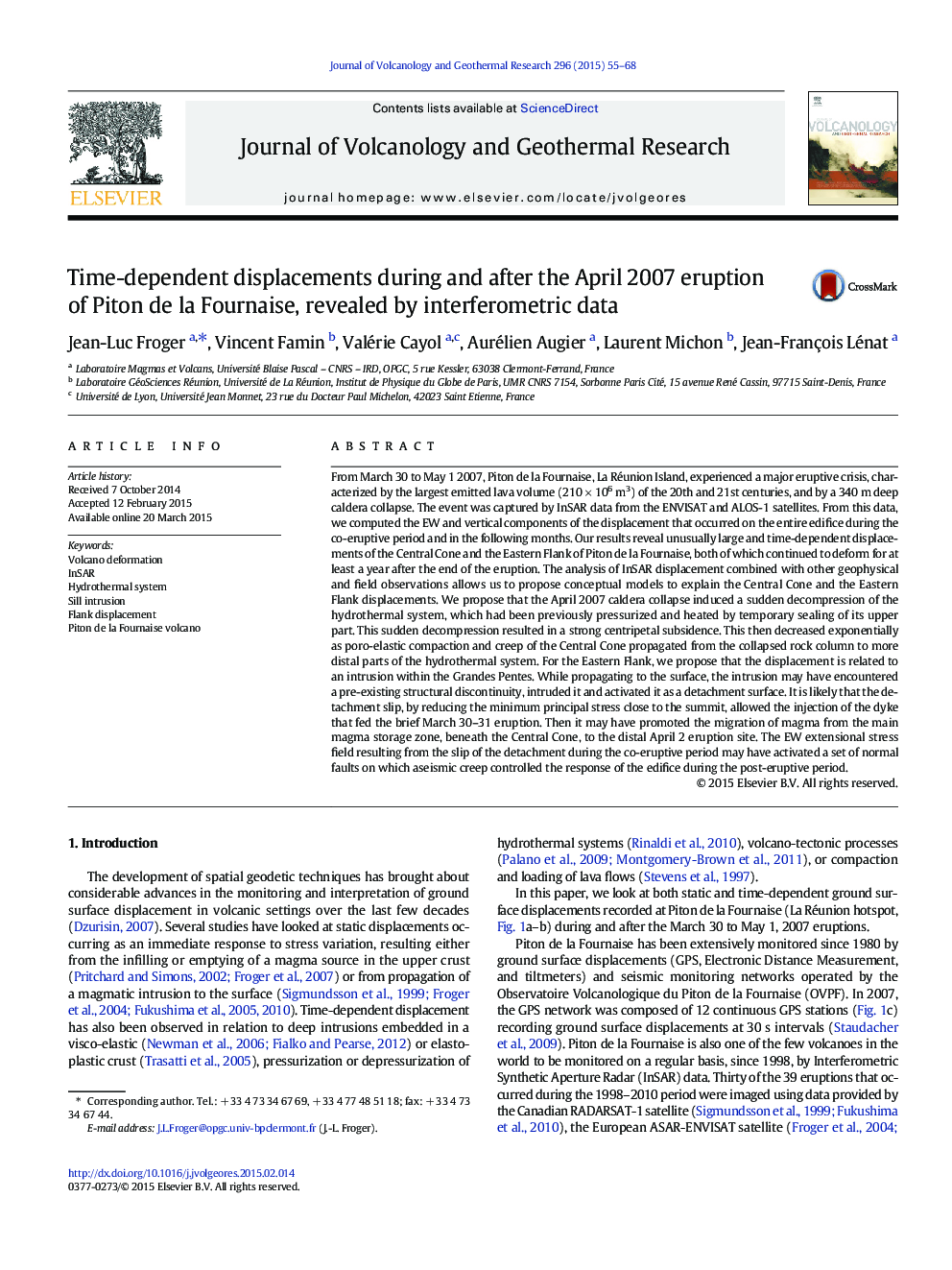| کد مقاله | کد نشریه | سال انتشار | مقاله انگلیسی | نسخه تمام متن |
|---|---|---|---|---|
| 4712349 | 1638326 | 2015 | 14 صفحه PDF | دانلود رایگان |
• In April 2007, Piton de la Fournaise experienced a major eruption.
• We characterized the associated co- and post-displacements from InSAR data.
• Careful analyses of the displacements lead us to propose two conceptual models.
• The shallow hydrothermal system may be responsible for the summit displacement.
• The Eastern Flank displacement provides evidence for an active detachment slip.
From March 30 to May 1 2007, Piton de la Fournaise, La Réunion Island, experienced a major eruptive crisis, characterized by the largest emitted lava volume (210 × 106 m3) of the 20th and 21st centuries, and by a 340 m deep caldera collapse. The event was captured by InSAR data from the ENVISAT and ALOS-1 satellites. From this data, we computed the EW and vertical components of the displacement that occurred on the entire edifice during the co-eruptive period and in the following months. Our results reveal unusually large and time-dependent displacements of the Central Cone and the Eastern Flank of Piton de la Fournaise, both of which continued to deform for at least a year after the end of the eruption. The analysis of InSAR displacement combined with other geophysical and field observations allows us to propose conceptual models to explain the Central Cone and the Eastern Flank displacements. We propose that the April 2007 caldera collapse induced a sudden decompression of the hydrothermal system, which had been previously pressurized and heated by temporary sealing of its upper part. This sudden decompression resulted in a strong centripetal subsidence. This then decreased exponentially as poro-elastic compaction and creep of the Central Cone propagated from the collapsed rock column to more distal parts of the hydrothermal system. For the Eastern Flank, we propose that the displacement is related to an intrusion within the Grandes Pentes. While propagating to the surface, the intrusion may have encountered a pre-existing structural discontinuity, intruded it and activated it as a detachment surface. It is likely that the detachment slip, by reducing the minimum principal stress close to the summit, allowed the injection of the dyke that fed the brief March 30–31 eruption. Then it may have promoted the migration of magma from the main magma storage zone, beneath the Central Cone, to the distal April 2 eruption site. The EW extensional stress field resulting from the slip of the detachment during the co-eruptive period may have activated a set of normal faults on which aseismic creep controlled the response of the edifice during the post-eruptive period.
Journal: Journal of Volcanology and Geothermal Research - Volume 296, 15 April 2015, Pages 55–68
